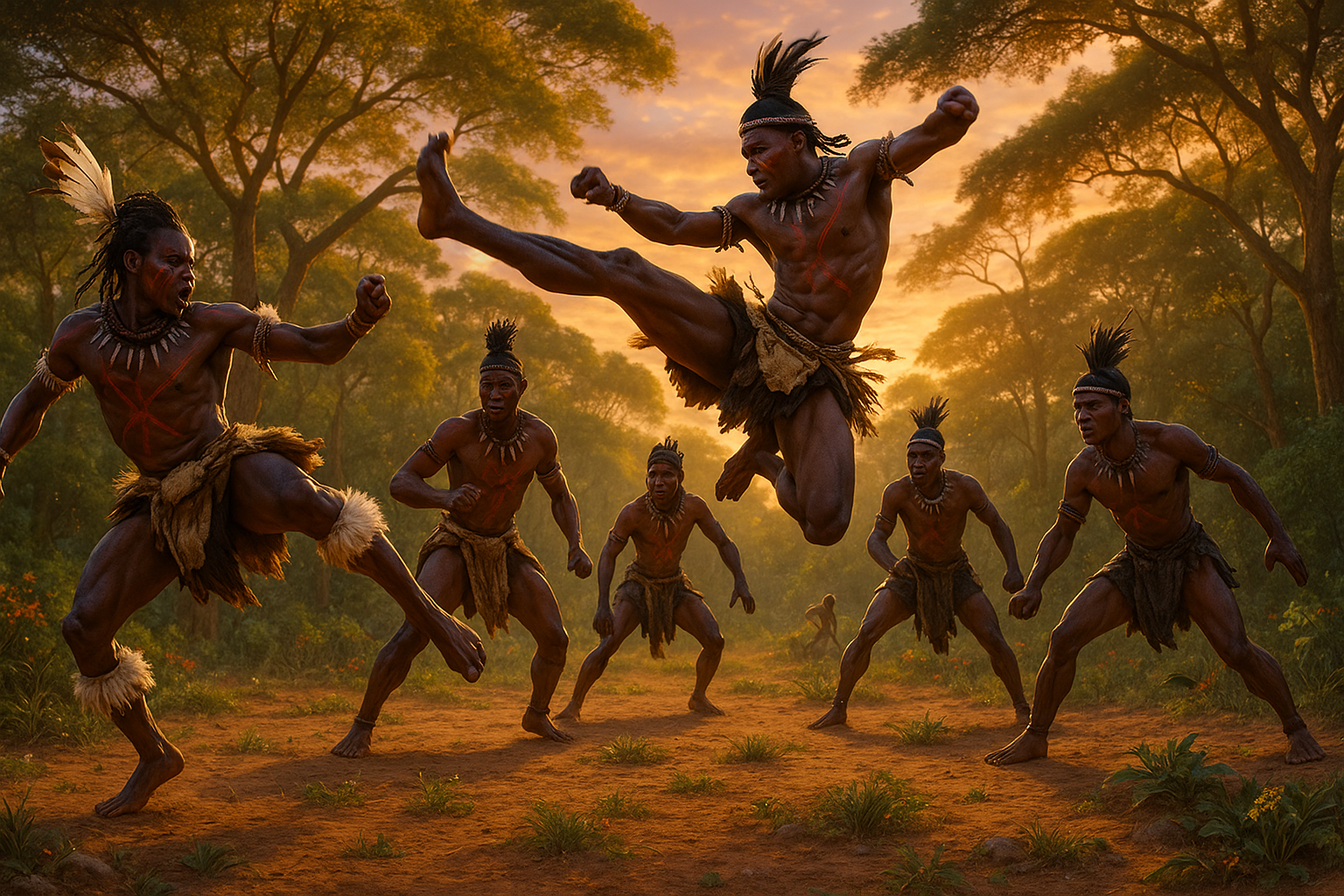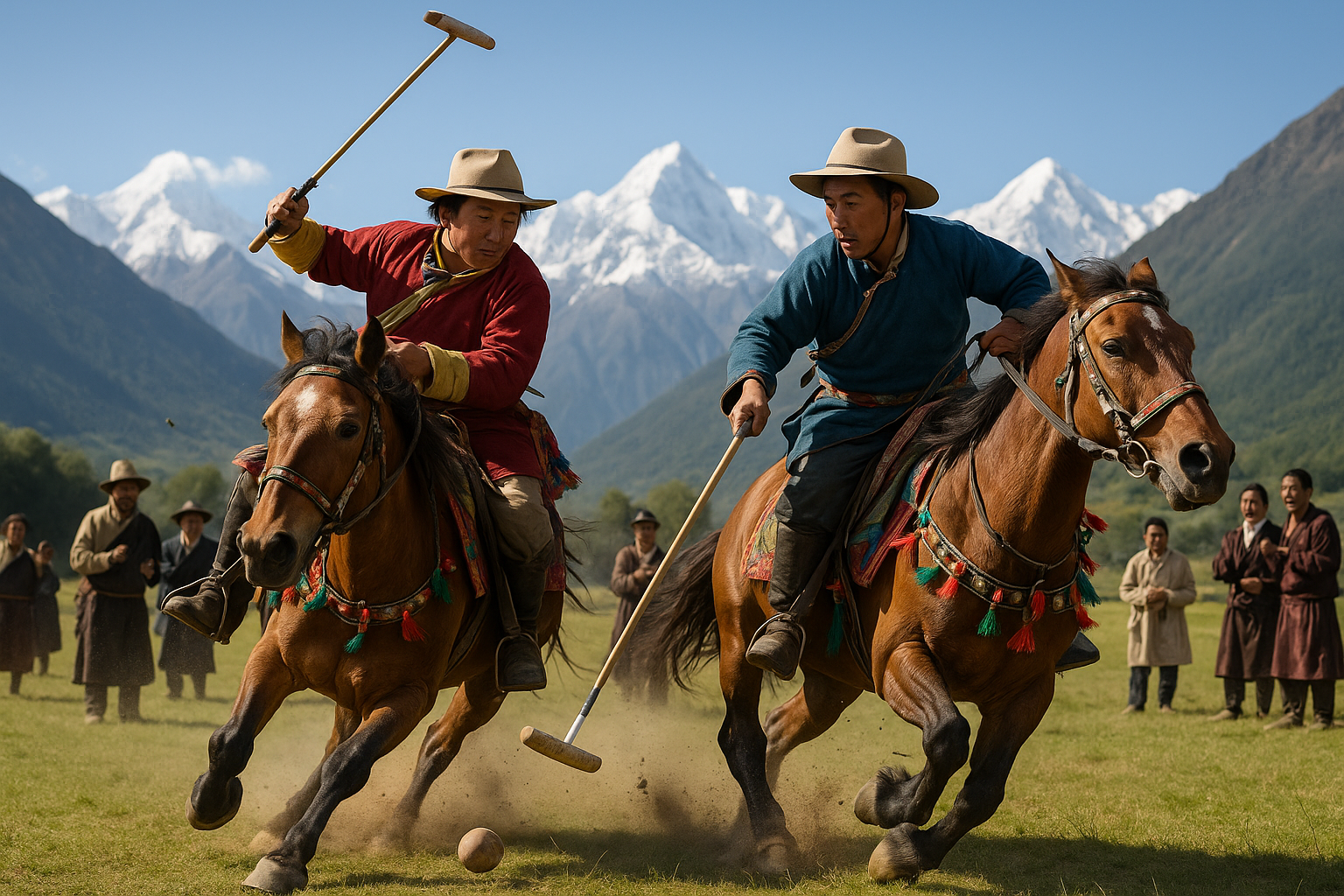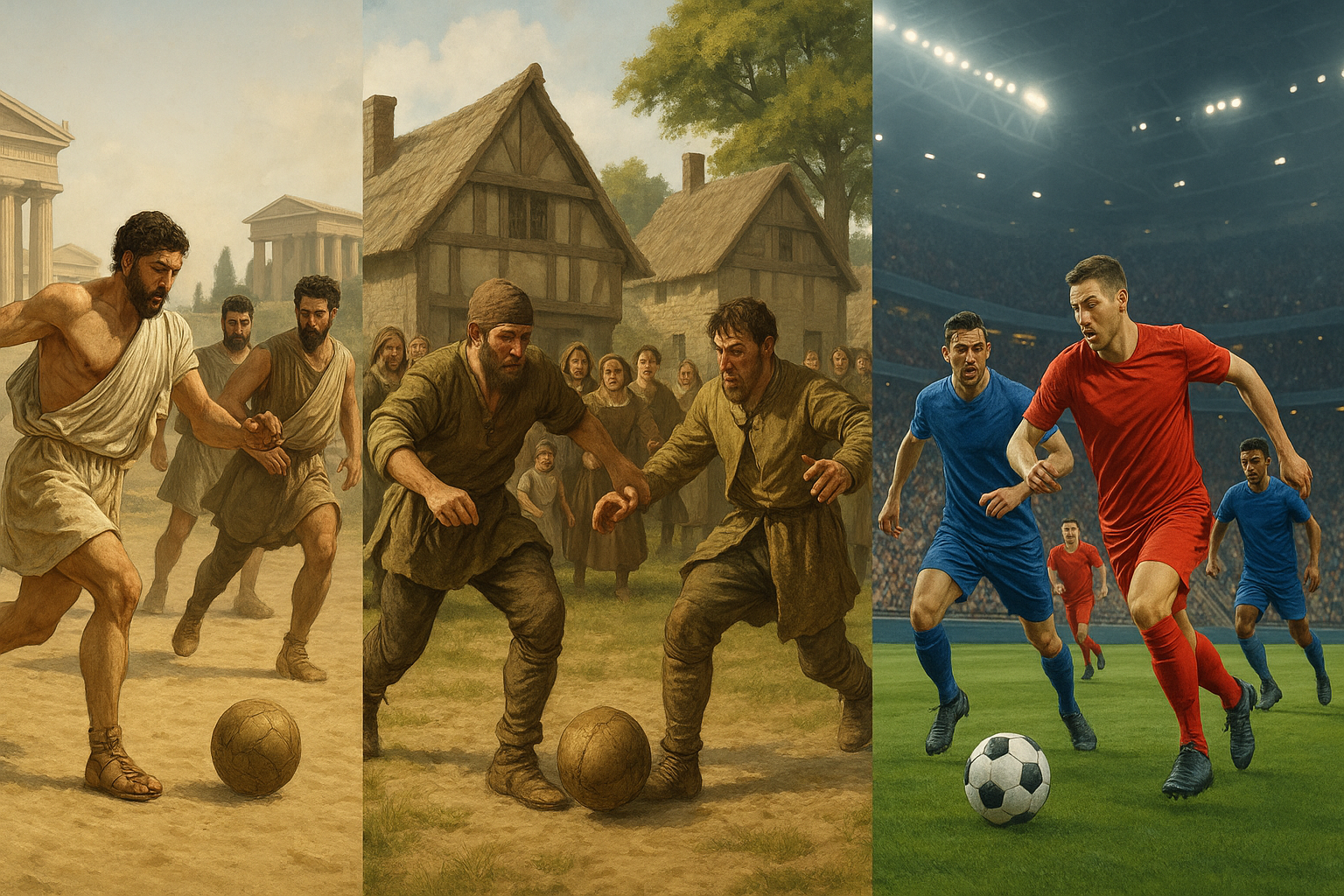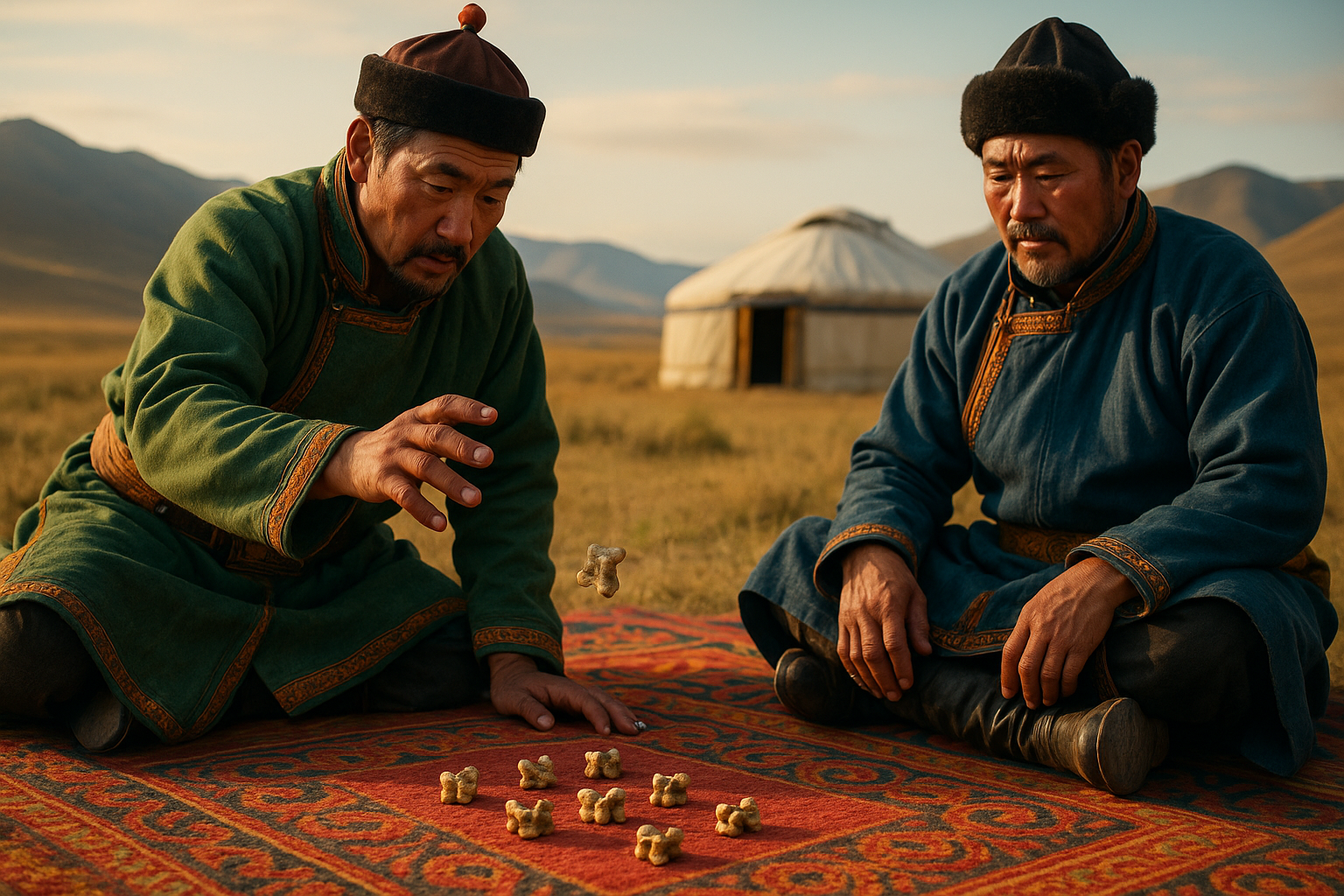Africa’s vibrant tapestry of cultures is a treasure trove of traditions, stories, and practices that have fascinated the world for centuries. Among its myriad cultural expressions, the dynamic combat dances stand out as both captivating art forms and powerful expressions of identity. These dances, a symbiotic blend of movement, music, and martial prowess, encapsulate the spirit and resilience of the communities from which they originate. They are more than mere performances; they are living histories, embodying the struggles, triumphs, and enduring legacies of their people.
Imagine a dancer moving with the agility of a panther, each step a rhythmic beat in a narrative as old as time. The air vibrates with the sound of drums, echoing the heartbeats of warriors from eras past. This is the world of African combat dances, where every movement tells a story, every gesture holds meaning, and every dance is a bridge between the past and the present. 🌍✨
These dances serve multiple purposes: they are both a form of entertainment and a means of preserving cultural heritage. They are also a method of passing down martial techniques that were once vital for the survival of tribes. Through these dances, warriors learned to defend themselves, their families, and their communities. But beyond their martial applications, these dances are deeply spiritual, often performed in rituals and ceremonies that honor ancestors and celebrate communal unity.
In this exploration of African combat dances, we will journey through the diverse landscapes of the continent, from the bustling cities to the tranquil villages, uncovering the unique characteristics that make each dance style distinctive. We will delve into the roots of these dances, tracing their evolution and transformation over time. From the energetic Capoeira of Angola, which has found a global audience, to the fierce and graceful movements of the Zulu war dances in South Africa, each style offers a window into the soul of its people.
We will also examine the role of music in these dances, a crucial element that elevates each performance to a sensory feast. The rhythms, often driven by traditional instruments such as drums, flutes, and strings, set the pace and tone, guiding the dancers in their storytelling. Music is not just an accompaniment but a partner in the dance, a dialogue between the seen and the unseen, between the dancer and the divine.
The contemporary relevance of these dances cannot be overstated. In a world where cultural identities are constantly being negotiated and redefined, African combat dances offer a powerful reminder of the importance of preserving and celebrating our diverse heritages. They challenge stereotypes, foster cross-cultural understanding, and inspire new generations to take pride in their roots. Furthermore, these dances have been instrumental in the development of modern dance styles, influencing artists and choreographers worldwide.
Throughout this article, we will highlight the stories of some of the master dancers and practitioners who have dedicated their lives to keeping these traditions alive. Their narratives of passion, dedication, and resilience serve as a testament to the enduring power of dance as a medium of expression and connection. 💃🏿🕺🏿
Finally, we will explore the potential for these dances to contribute to social change. Many practitioners and cultural organizations are leveraging the appeal and accessibility of dance to address contemporary issues such as social justice, education, and health. By engaging communities through workshops, performances, and cultural exchanges, they are using dance as a tool to empower individuals and bring about positive transformations.
Join us on this mesmerizing journey into the heart of Africa’s combat dances. Discover the stories behind the steps, feel the rhythm that connects us all, and appreciate the artistry that transcends time and space. As we unveil the layers of meaning in each dance, we invite you to reflect on your own cultural narratives and the dances that tell your story. Let’s unleash the power of dance together! 🌟

Conclusion: Embracing the Rhythm of Africa’s Combat Dances
As we draw to a close on our exploration of Africa’s dynamic combat dances, it’s evident that these art forms are far more than mere performances. They are vibrant expressions of cultural identity, historical legacy, and communal spirit. From the intricate footwork of Capoeira to the powerful storytelling of the Zulu War Dance, each dance encapsulates a unique blend of history, skill, and cultural pride. 🎶
One of the key points we’ve uncovered is the multifaceted role these dances play in African societies. They serve not only as a form of self-defense and physical training but also as a medium for storytelling, education, and social cohesion. The rhythmic movements and synchronized steps are not just visually captivating but also echo the resilience and unity of the communities they represent.
Moreover, these combat dances highlight the deep connection between movement and music, demonstrating how rhythm can transcend language barriers and bring people together. The beats of the drum and the chants of the dancers create a pulsating atmosphere that is both exhilarating and unifying. 🥁
It is crucial to recognize the cultural significance of these dances in today’s globalized world. As we strive for a more inclusive understanding of diverse cultural expressions, appreciating and preserving these traditional practices becomes ever more important. They offer invaluable insights into the heritage and values of African societies, enriching our global tapestry of cultural narratives.
We encourage you, dear reader, to delve deeper into the world of African combat dances. Whether by attending a local performance, watching documentaries, or participating in workshops, immersing yourself in this art form can offer a profound appreciation for its beauty and complexity. 🌍
Feel inspired to share this knowledge with others. Comment below with your thoughts, share this article with friends, or apply what you’ve learned by exploring the dances yourself. By doing so, you contribute to the preservation and celebration of these remarkable cultural treasures.
In closing, let the rhythm of Africa’s combat dances inspire you to move, connect, and appreciate the diverse expressions of human creativity. The power unleashed in these dances is a testament to the enduring spirit of those who perform and preserve them, and it invites us all to engage in a dynamic dialogue with cultures different from our own.
Thank you for joining us on this journey. We hope it has been as enlightening for you as it has been for us. Keep dancing, keep learning, and keep exploring! 💃🕺
Remember, this is a draft conclusion intended to encapsulate the richness of African combat dances and encourage further engagement. Adjustments might be needed to better fit the specific content and style of your article.
Toni Santos is a cultural revivalist, play historian, and kinetic storyteller who travels time through the games we left behind. With a deep reverence for lost pastimes, Toni excavates forgotten sports, ancestral competitions, and community games that once defined how people moved, bonded, and thrived. From ancient Mesoamerican ball courts to medieval street games, nomadic strategy contests, and pre-colonial ritual play, Toni revives rulebooks that were never digitized—and champions a worldview where games weren’t just leisure, but meaning, skill, and survival. Combining ethnography, movement studies, game design, and oral tradition, he reconstructs games piece by piece, consulting archives, elders, and fragments of folklore. His mission is not only to replay the past, but to inspire new generations to rediscover joy in rules that challenge, unite, and reflect forgotten values. At the helm of Vizovex, Toni documents these rediscoveries with playable guides, interactive reconstructions, motion-capture reenactments, and interviews with guardians of ancient play. His platform speaks to: Experimental game designers and kinetic anthropologists Educators looking to decolonize sports curriculums Movement artists and cultural preservationists Playful minds seeking what we once valued in the games we played Whether it’s reimagining a Viking endurance sport, mapping traditional Māori games, or crafting tournaments for extinct athletic rites, Toni urges us to move like our ancestors once did—and play with purpose again.




